Dryer Vents on the Roof: What You Need to Know
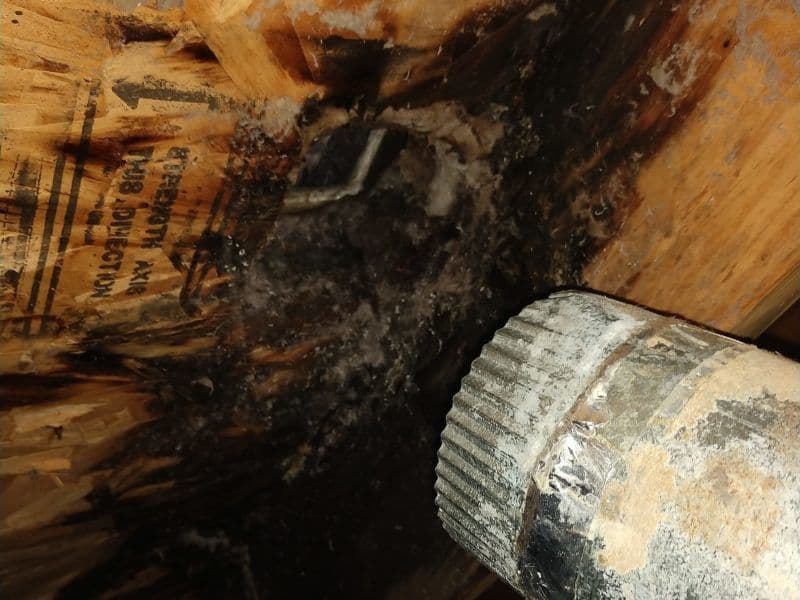
The Problems with Dryer Vents on the Roof
Dryer vents on the roof cause way more problems than those that exit the side of the home. Improper vent covers are used in almost every case and they are difficult to clean. Adding to the problems is the fact that you cant easily see the cover to tell how well the dryer exhaust is flowing.
Improper roof vent covers used for dryer vents
While there are quality products designed specifically for use on roof dryer vents, home builders do not use them. They use cheaper roof vent covers designed for clean systems like bathroom exhaust fans. A dryer vent system is a dirty system because it is moving lots of water vapor and lint. These conditions can cause improper vent covers to clog which then leads to dryer repairs, dryer fires, roof damage and other issues. The two most common types of covers in Maryland are those with louver screens and those with flaps.
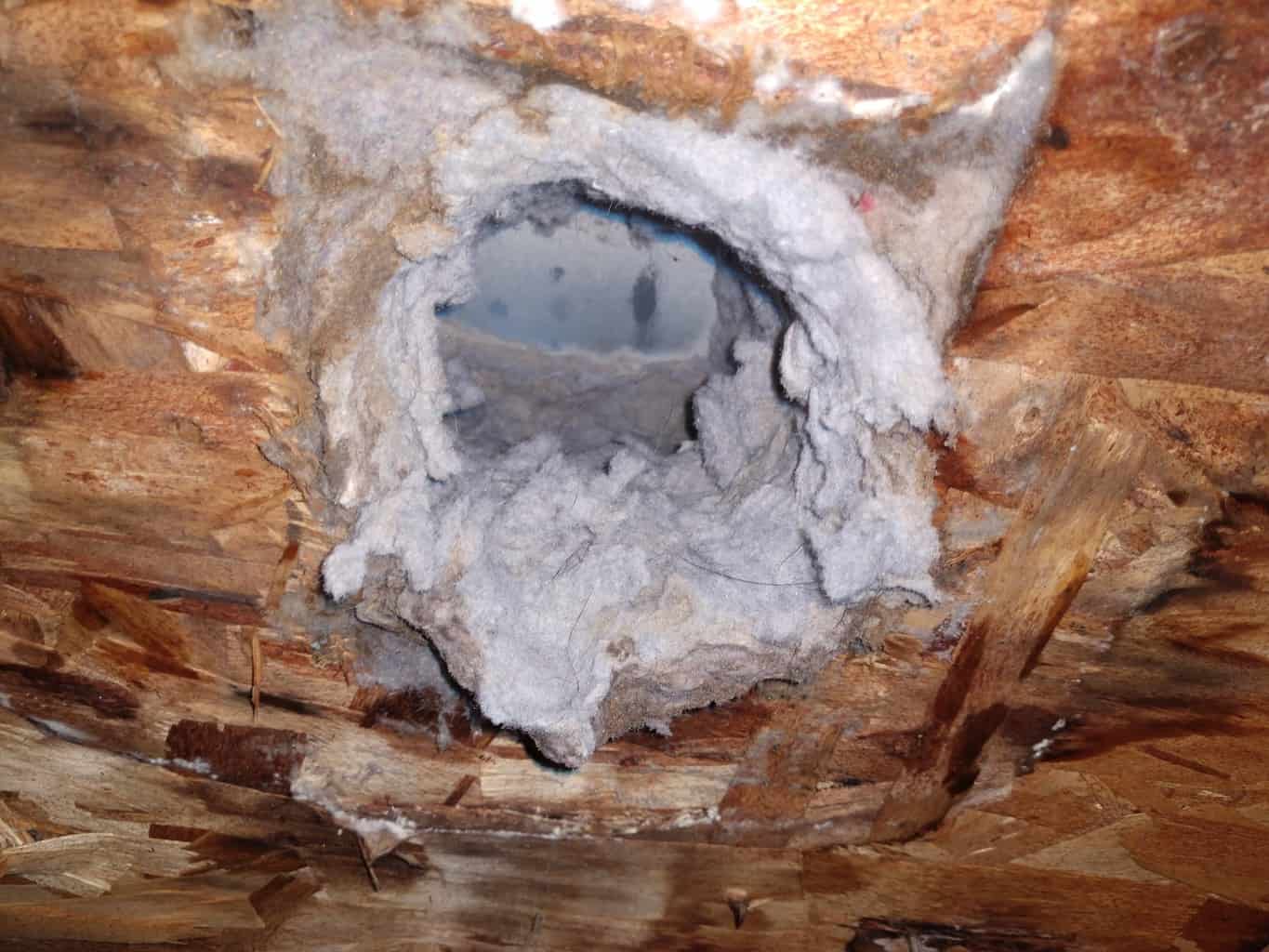
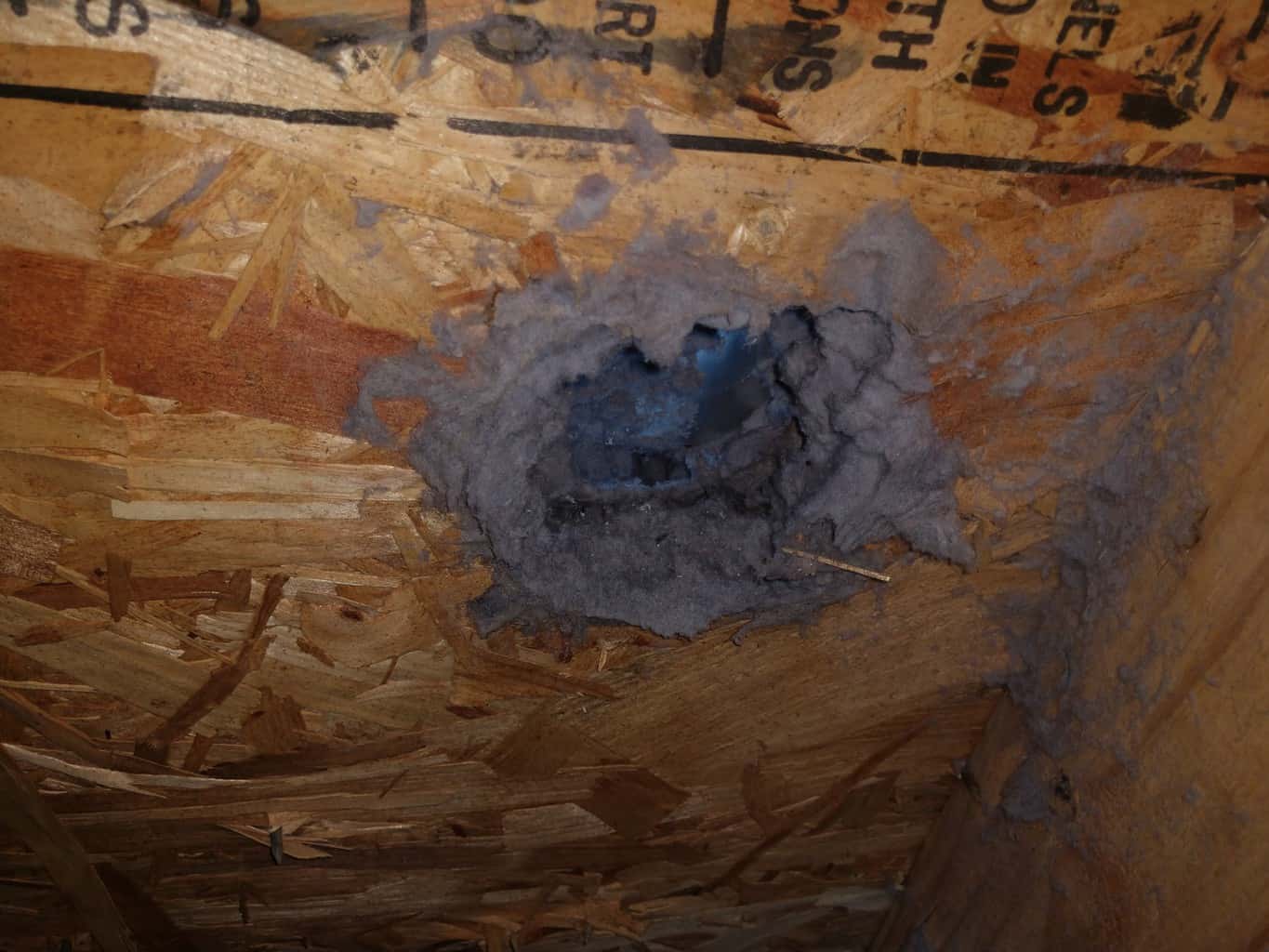
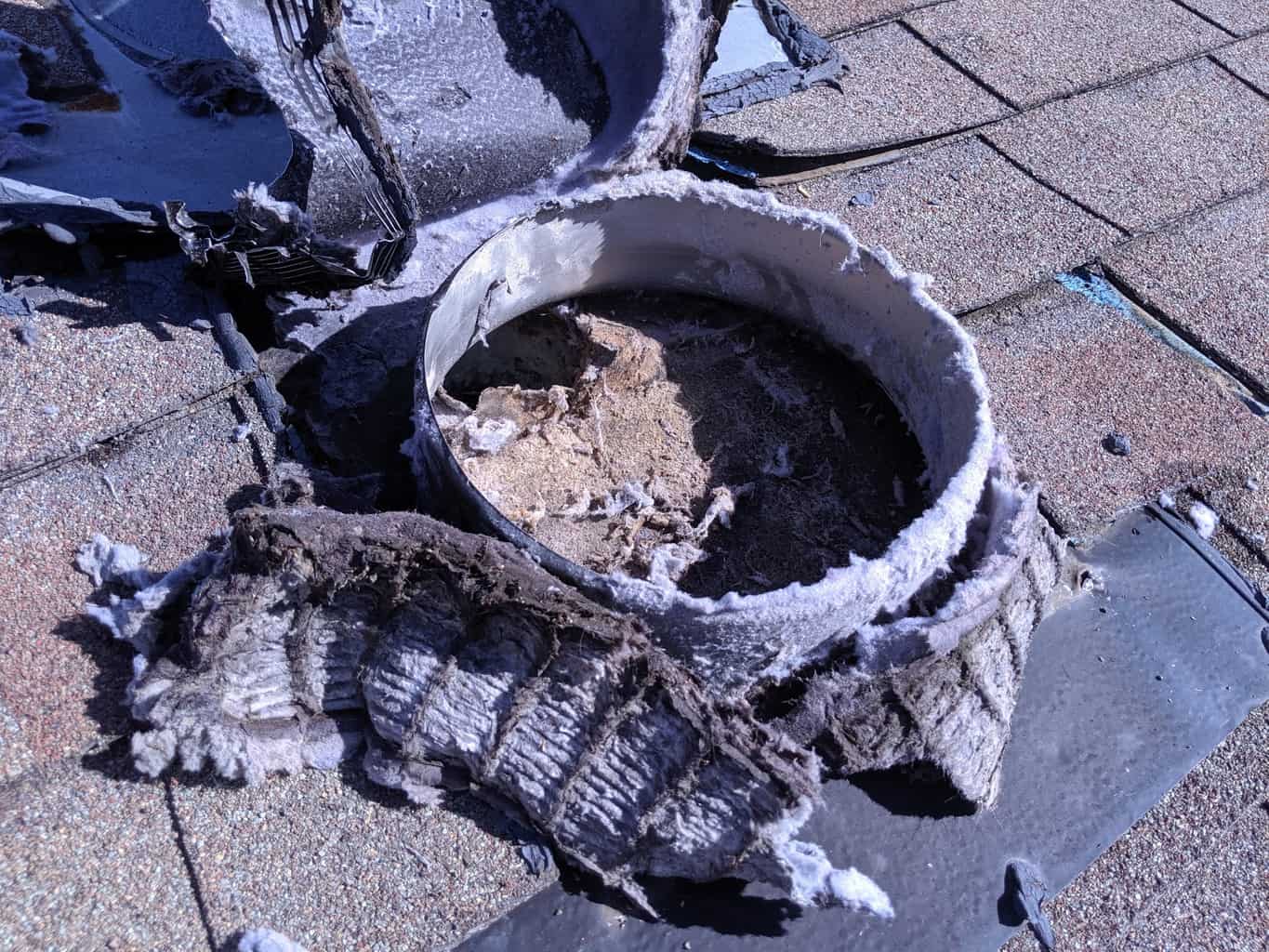
Vent covers with louver screens
These vent covers are the worst kind and they are fairly common. They aren’t designed to be taken apart, so you can’t clean them from the roof without ripping them open. This is because they aren’t intended for dryer vents. They can only be cleaned from the attic and even then they are a challenge to get completely clean.
These louver screened vent covers cannot be cleaned from the laundry room with a brush or with compressed air. If you look at the picture of the bottom of the vent cover you will see a short potion of a round duct that extends into the cover The exhaust has to flow up through this section and then down around the outside of it and then out the louvered screens. A brush or compressed air hose will not be able to navigate that. They would simply hit the top of the cover. There’s no way they could clean those crusty louvers even if they did reach them.
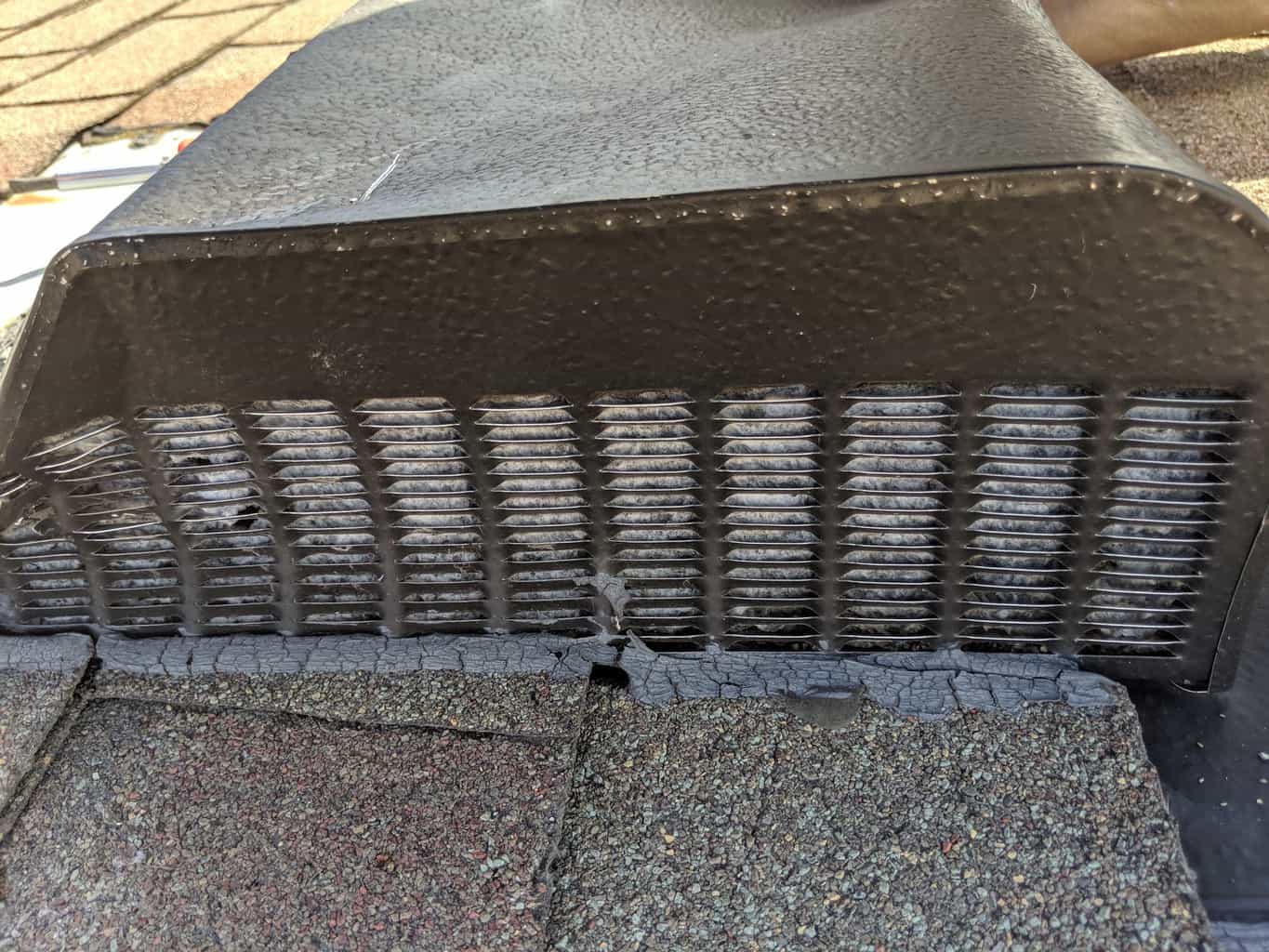
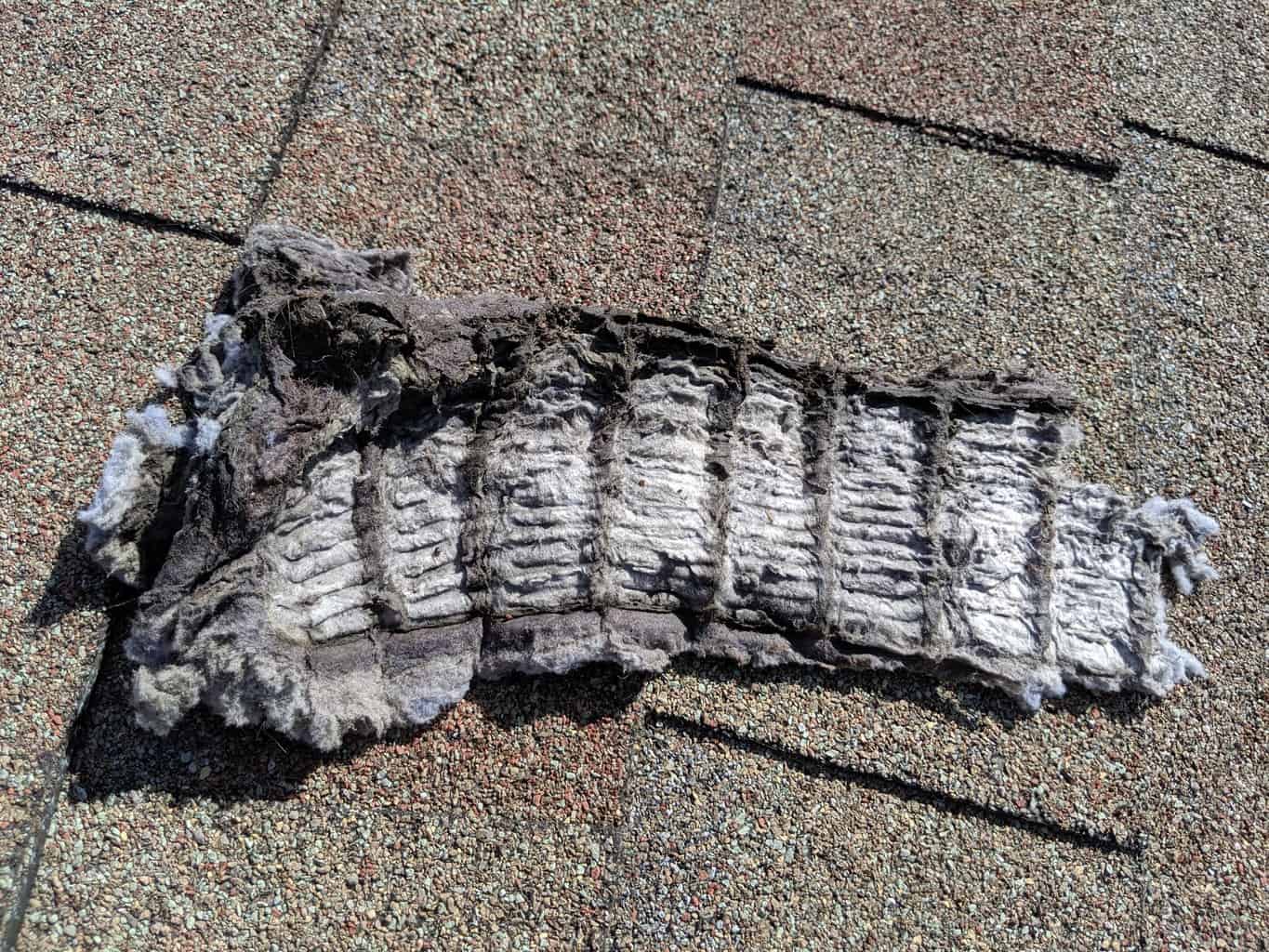
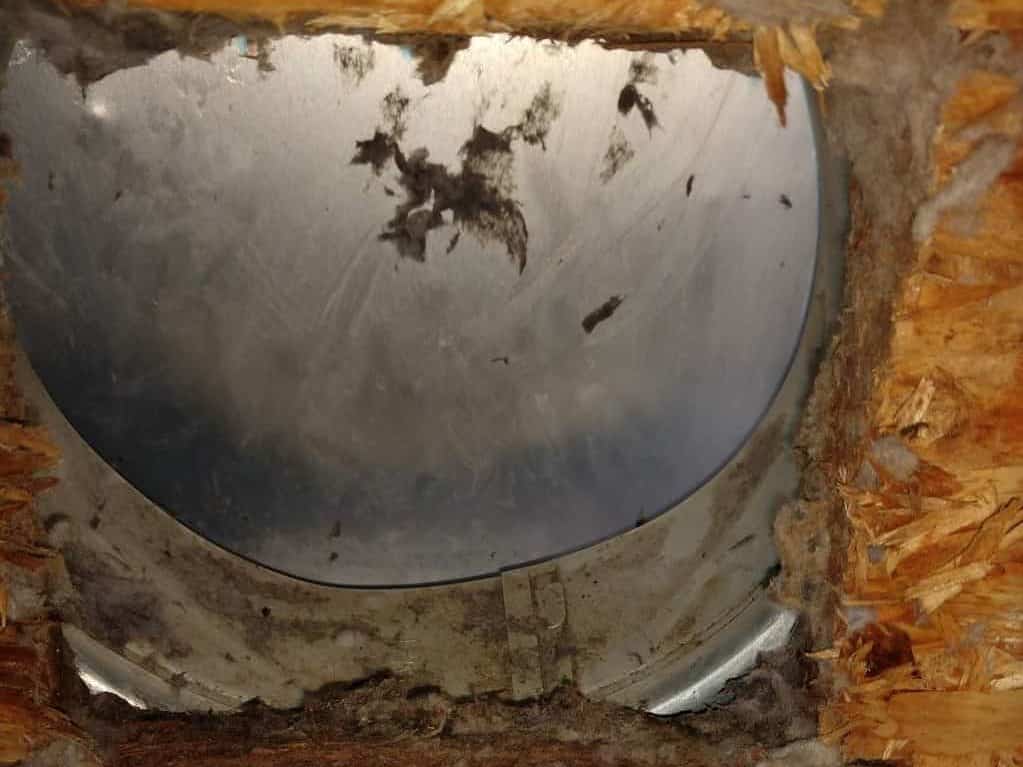
Vent covers with flaps
Most roof vent covers have flaps (back draft dampers) and they are typically made of thin, flimsy aluminum. The problem with these flaps is that they usually have tight clearances with body of the vent cover. Wet lint builds up all around the flap and then turns into a crust when the sun bakes the metal vent cover. This crust gets in the way of the flap and causes it to get stuck. Sometimes they get stuck open and sometimes they get stuck closed. Neither outcome is good. Again, they are not designed for use in a dirty system.
These vent covers and their flaps can be cleaned from the roof or the attic. Sometimes there is a metal screen attached over the vent cover that is easily removed. These vent covers cannot be cleaned properly from the laundry room only, since the lint crust must be removed to free the flap. Neither a brush or compressed air will remove this crust. Also, there is a very good chance that a brush would catch on the flap and damage it. This would cause cause even more problems.
Below are some pictures of flaps that were stuck closed. Note the tight clearances and especially note the last picture and how crusty it still is, even after cleaning by hand. It needed subsequent cleaning by a wire brush to operate freely.
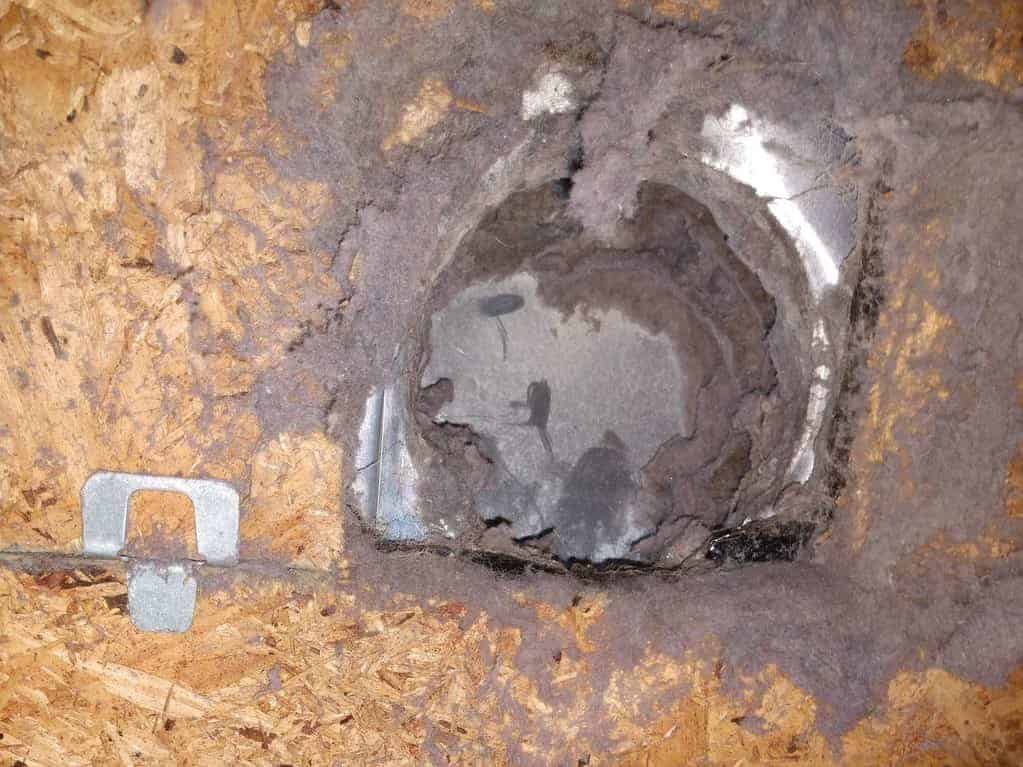
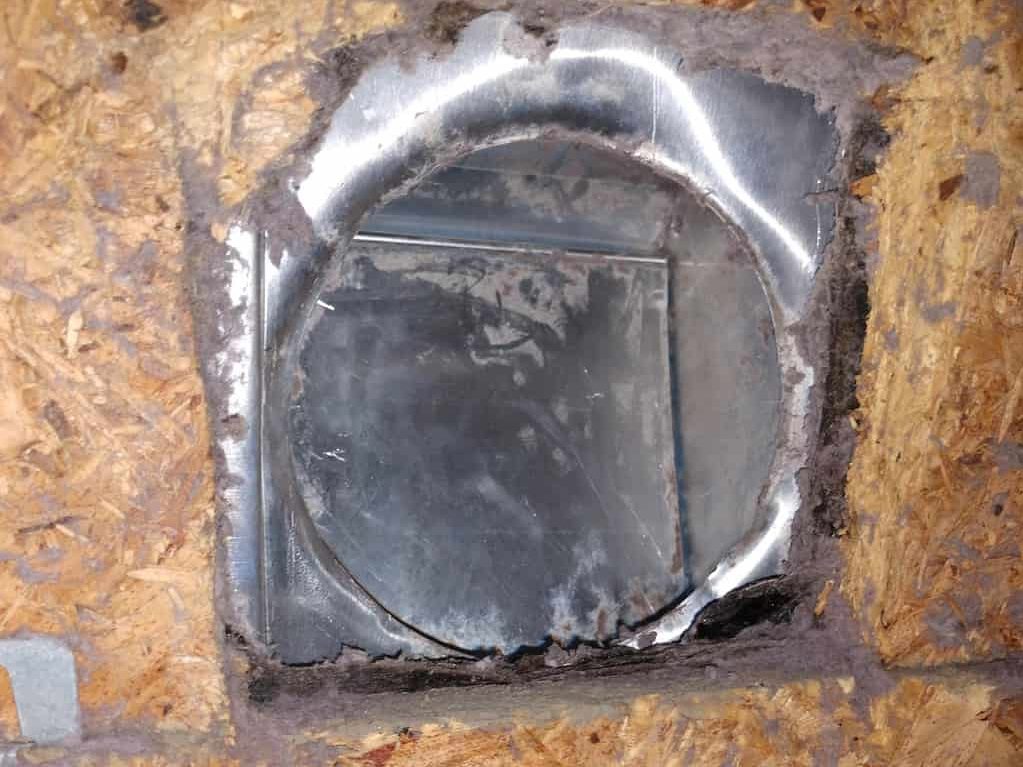
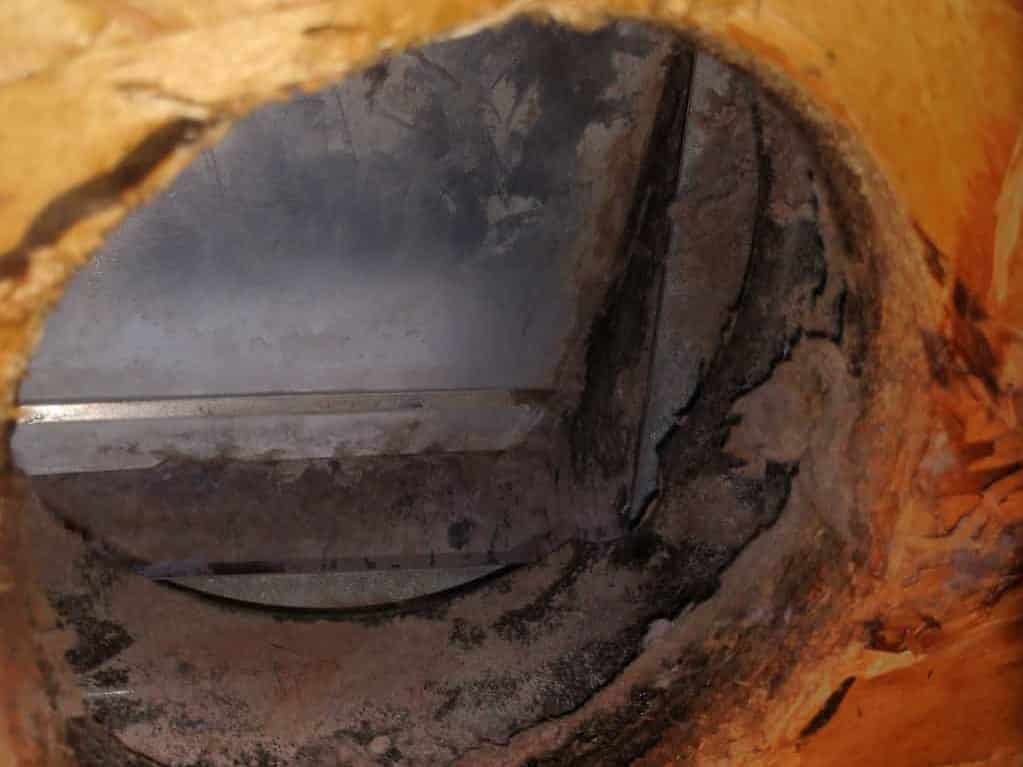
Wet dryer exhaust contacts the roof sheathing (wood)
The overwhelming majority of roof dryer vent covers are attached to the top of the roof with no portion of ducting that extends through the roof. The exhaust going through the roof should never come into contact with the roof, because it’s wet! Yet this is the way they build them.
Think about it as if it were a water pipe going through a wall. Would you cut a hole in the wall and then flange the pipe to both sides of the wall with no actual pipe going through the wall? Of course not! The water would soak into the wall as it passed through the hole. That is essentially what is happening with the roof vent covers that do not have a duct portion that goes through the roof. The result is water soaking into your roof and causing it to rot, especially when the roof vent cover gets blocked.
If the duct is inserted into the roof hole, the wood is still subject to the moisture in the dryer exhaust. The first picture below is an example of that. Most of the time the duct is just flanged to the roof as shown in the second picture below. Sometimes a separate flange piece is attached to the roof for a nicer connection to the duct, but the wood still separates the flange and the cover. This can be seen in the third picture below. All of these are poor practices. Again, the duct should be one continuous duct that goes through the roof so that the wet exhaust never touches the actual sheathing. We see many instances of roof rot as a result of using improper construction. Combine an exposed roof with a cover that clogs and you can get some serious roof damage.
There are roof vent covers designed for dryer vents that go through the roof in one piece, ensuring that the wet exhaust never touches the wood roof sheathing. Unfortunately, we never see them installed.

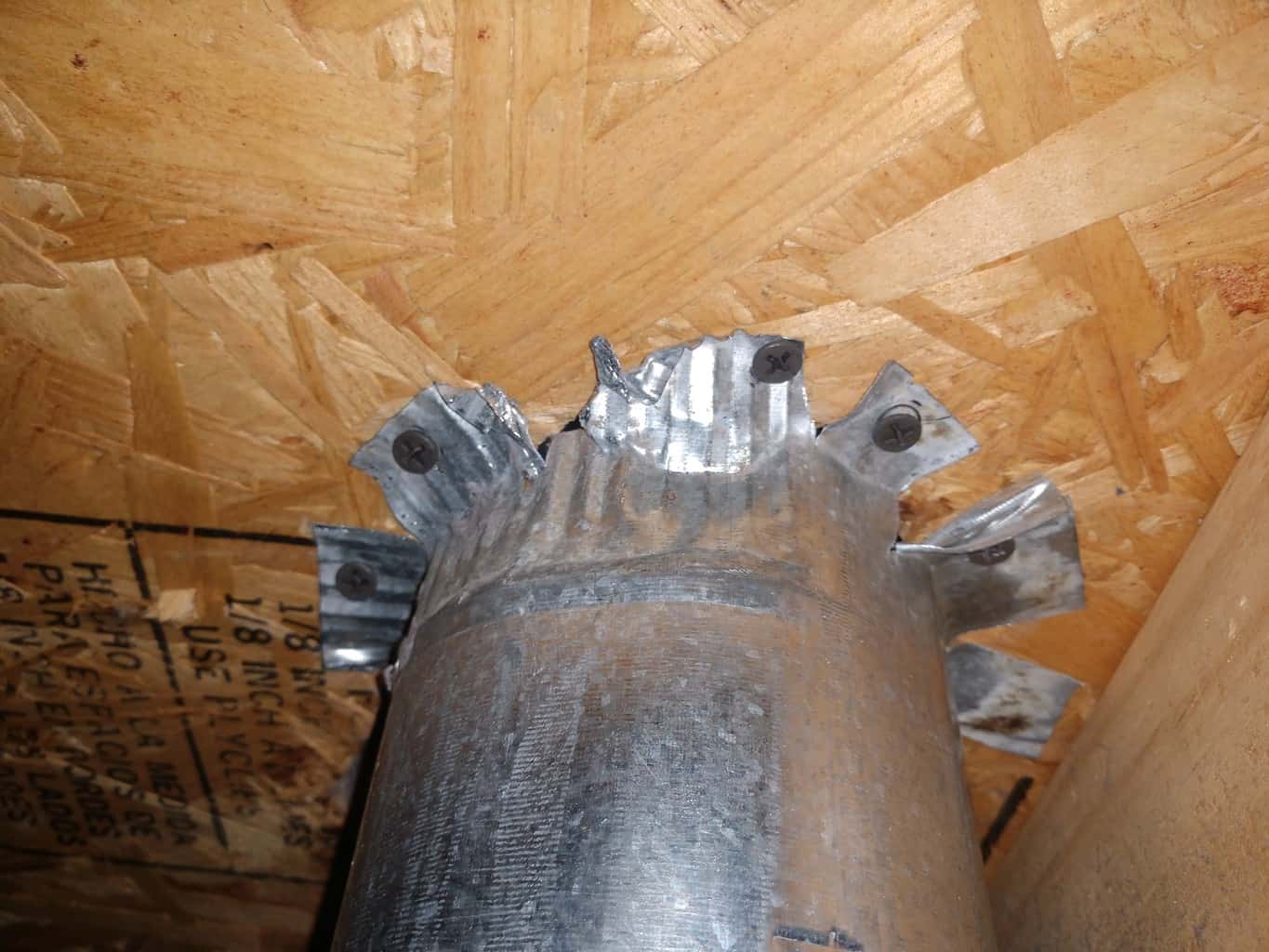
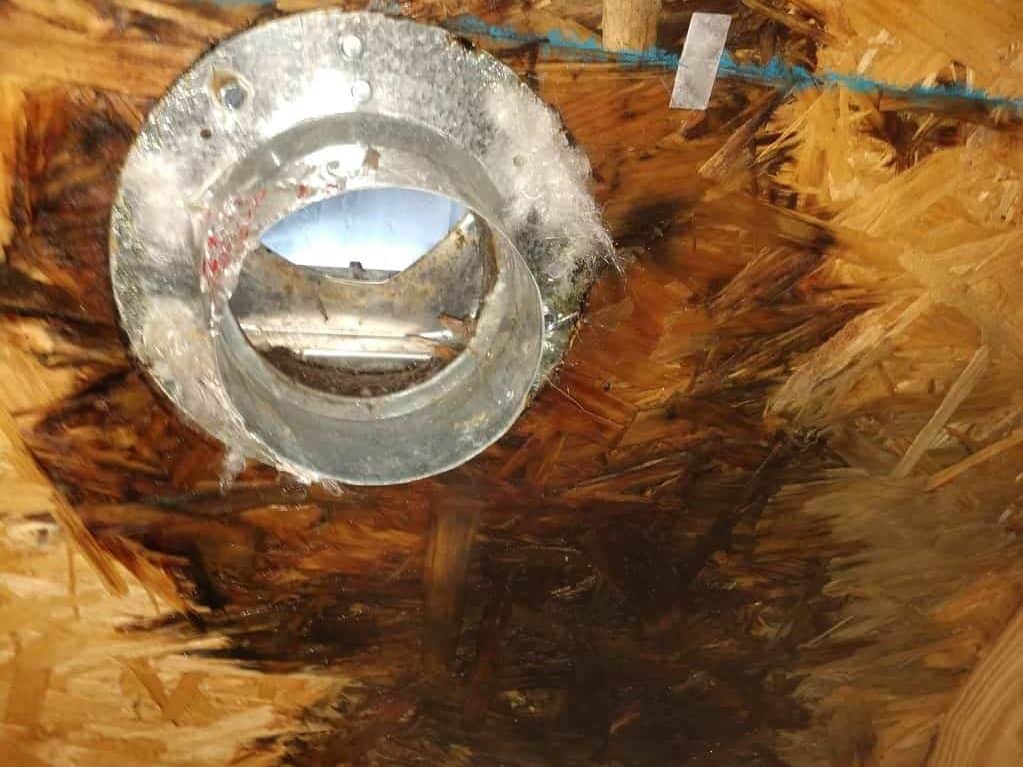
Improper flow area in the vent cover
Many of these roof vent covers do not maintain the same equivalent area as the 4 inch dryer vent ducting. Therefore, they act as a flow restrictor.
Improper Holes Cut in the Roof
Most holes cut through the roof for dryer vents are not done correctly. They are almost always irregular shapes, as if they were cut haphazardly with a handsaw. They are also typically too small for the 4 inch dryer vent. Irregular shapes and small holes results in the wood sheathing catching lint and absorbing water. That’s not a good combination. This leads to roof damage and dryer fires.
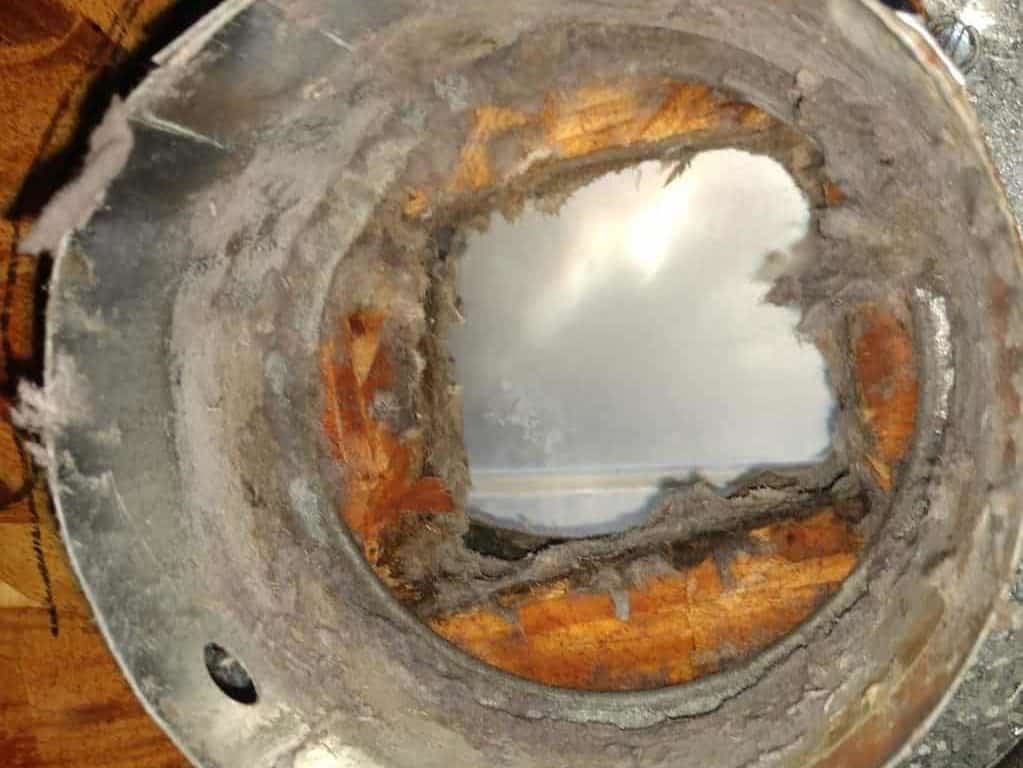
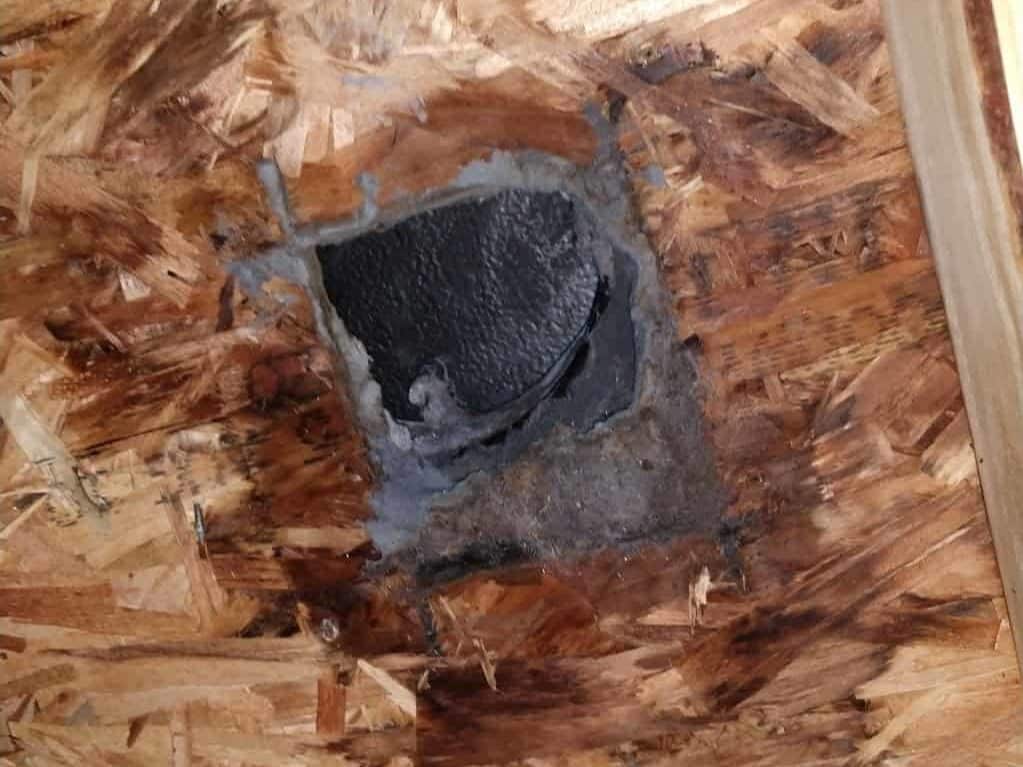
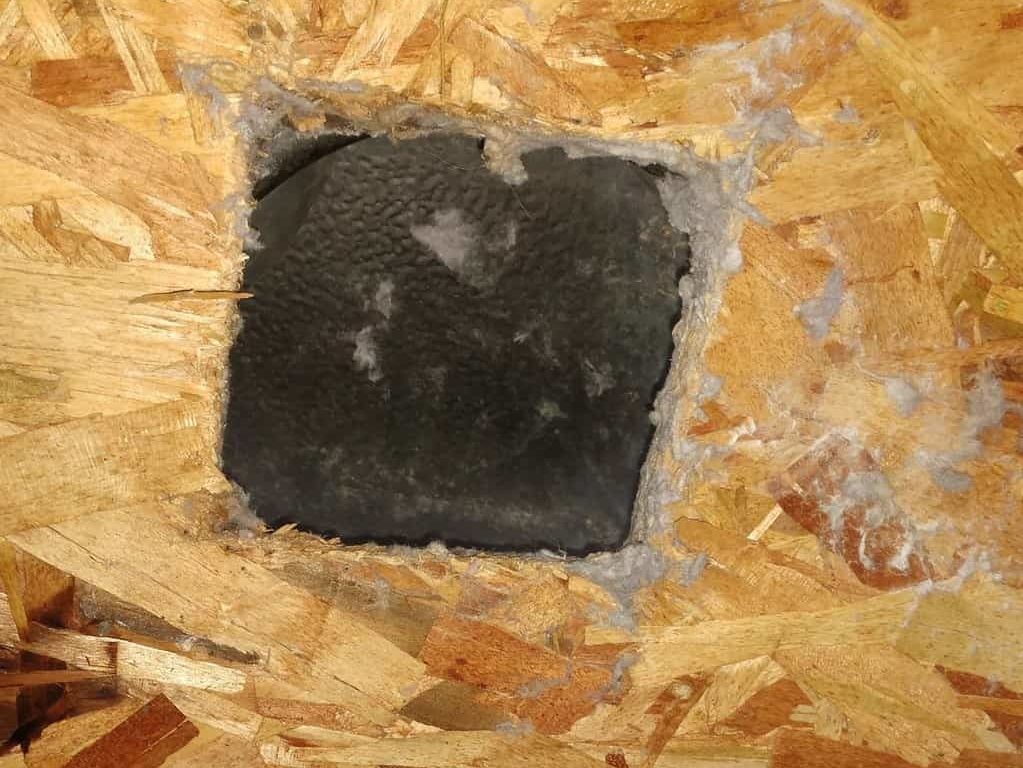
What Does all This Mean?
- Dryer vents on the roof should be moved to exit out the side of the home, if possible. Dryer vents are much easier to clean and monitor when the exit the side of the home. This isn’t always feasible though, as in the case of a town home that is not an end unit.
- If the dryer vent cannot be moved, we recommend replacing the roof cover with a proper one that is designed specifically for dryer vents.
- If cleaned, dryer vents on the roof should typically be cleaned from the attic. While it’s possible to clean some of them from the roof, this is usually more dangerous and you miss out on identifying roof damage or other vent construction problems only seen from the attic.
- Dryer vents on the roof should be monitored more closely and cleaned more frequently than those that exit the side of the home.
Check out our dryer vent cleaning service to learn more about how we can help resolve any of these issues.
Please share this article with your friends, family and neighbors so that they can identify dryer vent issues and get them resolved before they damage their dryer or have a fire in their home.
Thanks for taking the time to read this! We hope it helped you understand dryer vents on the roof and the problems they present.